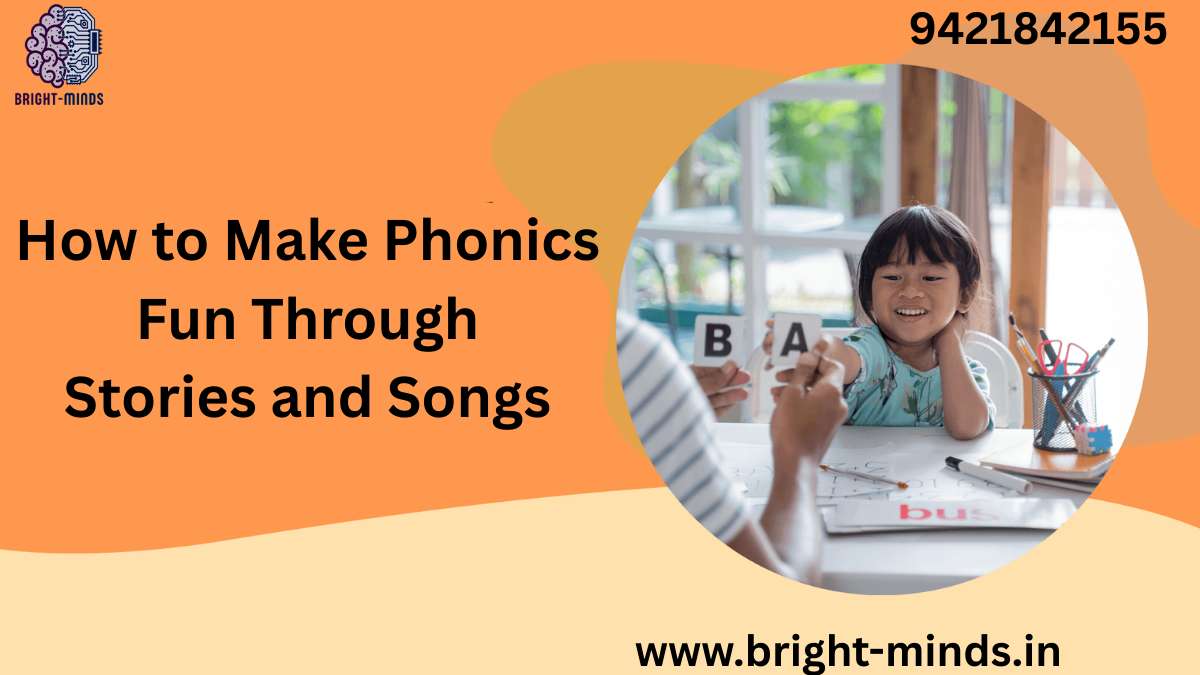Let’s face it—traditional phonics lessons can feel repetitive and dry. But when you add music, rhythm, and storytelling into the mix? Magic happens.
Teaching phonics doesn’t have to be all about flashcards and drills. With the right approach, stories and songs can transform phonics into an adventure—one where children not only learn how to read but love the journey along the way.
Whether you’re a parent helping your child at home, a teacher in a classroom, or a company employee contributing to a literacy program, this blog will walk you through how to make phonics fun, engaging, and effective using storytelling and music.
📚 What Is Phonics and Why Is It Important?
Phonics is the method of teaching reading by correlating sounds with letters or groups of letters. For example, the letter “s” makes the /s/ sound as in sun, and the group “sh” makes the /ʃ/ sound as in shoe.
Understanding phonics is one of the most essential skills for early readers because:
- It builds reading fluency
- Enhances spelling accuracy
- Supports word recognition
- Lays the foundation for lifelong literacy
🌍 Market Trends and Industry Insights
The global early education market is booming, with phonics-based programs at the heart of many EdTech platforms and school curricula. Research shows that multi-sensory learning—like singing songs and listening to stories—dramatically improves engagement and retention among early learners.
Tech companies and educational startups are rapidly integrating interactive songs, story apps, and animated content to teach phonics more effectively. These innovations are reshaping how we introduce children to language—making it more playful, natural, and memorable.
🎵 Why Use Stories and Songs to Teach Phonics?
Children remember stories and songs more easily than isolated sounds or rules. Here’s why:
- Songs repeat sounds in catchy, rhythmic ways, helping kids internalize phonics patterns.
- Stories provide context, showing how phonics sounds form real words in meaningful sentences.
- Both spark emotion and imagination, which boosts memory and motivation.
When phonics is taught through creative play, kids don’t even realize they’re learning—they’re just having fun.
✅ How to Make Phonics Fun Through Stories and Songs
Here are practical, beginner-friendly tips to bring phonics alive using storytelling and music:
1. Start with Simple, Repetitive Songs
Songs like “The Phonics Song” or “B-I-N-G-O” repeat letter sounds and word patterns in an enjoyable way. Use them to introduce or reinforce common sounds like /a/, /t/, /m/, etc.
🎧 Tip: YouTube and Spotify have tons of phonics songs for every sound!
2. Use Storybooks That Focus on Sounds
Pick books that emphasize certain phonemes (letter sounds). For example, a story like “Silly Sally” can help reinforce the “s” sound. Look for books with alliteration, rhyming, or sound repetition.
📖 Example: “The Big Pig on a Rig” – A fun way to explore short vowel “i”.
3. Create Your Own Sound Stories
Tell short, silly stories that focus on one sound family. For instance, a story about Sam the Snake can include lots of /s/ words: “Sam saw six snails sliding silently.”
✍️ Bonus Tip: Encourage kids to help you build the story—this boosts creativity and phonics skills at the same time.
4. Incorporate Movement with Songs
Phonics songs that involve actions—like jumping for “j”, running for “r”, or clapping for “c”—engage the body as well as the mind. This multi-sensory learning makes the lesson stick.
5. Make a Phonics Playlist
Build a go-to playlist of songs for each sound. Sing them in the car, during playtime, or before bed. Repetition in different settings reinforces learning.
6. Act Out Stories with Phonics Props
Use puppets or props that match the story’s sound focus. If you’re doing a story about the /b/ sound, bring out a ball, banana, and bear. It makes learning tangible and interactive.
7. Encourage Kids to Sing Their Own Phonics Songs
Give them a tune (like Twinkle Twinkle) and ask them to fill in the lyrics using words with the target sound. This boosts creativity and reinforces sound-letter associations.
💡 Real-World Applications
Companies investing in CSR (Corporate Social Responsibility) programs often focus on child literacy. Employees volunteering to teach basic phonics can use these story-and-song methods during community sessions, NGO events, or virtual tutoring programs.
EdTech companies are also adopting this fun-first approach in their learning apps. Features like animated phonics songs, story games, and sound-based challenges are now standard.
For general learners, combining phonics with stories and songs makes reading not just a skill—but a source of joy.
🧠 Quick Tips Recap
| Technique | Benefit |
| Use phonics songs | Reinforces sound patterns |
| Storybooks by sound | Contextual learning |
| Action songs | Multi-sensory engagement |
| Sound-specific stories | Builds phonemic awareness |
| Create with kids | Boosts confidence & creativity |
🎯 Take the First Step Today
Whether you’re a parent, educator, or professional looking to make a difference, remember: learning can—and should—be fun. Phonics is more than just memorizing rules. It’s about unlocking a world of words, stories, and songs.
Also Read:
https://bright-minds.in/unlocking-word-meaning-for-class-ukg-english-to-hindi/

